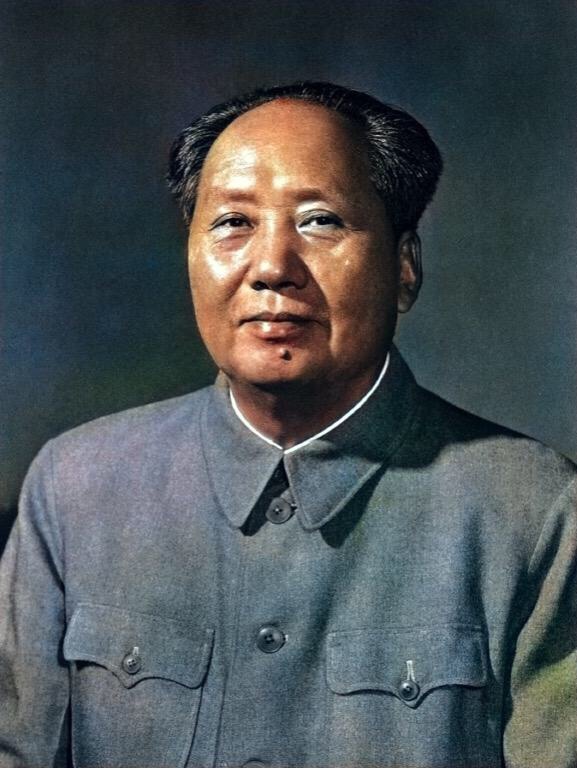On 10 April 1971, the simple game of table tennis marked the beginning of a thaw in the diplomatic freeze that had existed between the US and China for over 20 years. The occasion became known as ping-pong diplomacy.
The US ping-pong team was in Nagoya, Japan, for the 31st World Table Tennis Championships, and following a team practice 19-year-old Californian student, Glenn Cowan, missed the team bus. Zhuang Zedong, a Chinese player and three times world champion, on seeing Cowan’s plight, offered the American a seat on the Chinese team bus.
“The ping heard round the world”
 Although talking to a foreigner was deemed a crime in China, the two men, chatting through an interpreter, found a rapport. Zedong gave the American a silk gown by way of a present and invited the American team to play a friendly championship in China. This seemingly innocuous invitation has to be seen in the context of the time – no American had stepped on Chinese soil since Chairman Mao (pictured) had come to power 22 years earlier in 1949. Time magazine called it “The ping heard round the world.”
Although talking to a foreigner was deemed a crime in China, the two men, chatting through an interpreter, found a rapport. Zedong gave the American a silk gown by way of a present and invited the American team to play a friendly championship in China. This seemingly innocuous invitation has to be seen in the context of the time – no American had stepped on Chinese soil since Chairman Mao (pictured) had come to power 22 years earlier in 1949. Time magazine called it “The ping heard round the world.”
By the time they had got off the bus the Chinese team and their American passenger were surrounded by the press. Within hours, Zedong’s informal invitation had been endorsed by Mao and been made official.
Thus, on 10 April 1971 nine US players, four officials, two spouses and five US journalists crossed a bridge from Hong Kong onto Chinese soil.
‘Friendship First Competition Second’
Under the slogan ‘Friendship First Competition Second’, the Chinese men’s team won 5-3, and the women’s team 5-4; the Chinese politely refraining from inflicting a white-wash on the Americans. Glen Cowan, with this American long hair and red hairband, was clearly the crowd’s favourite.
In between matches, the US team, followed every step by a scrum of media, was treated to a sightseeing tour which took in the Great Wall, the Summer Palace and frequent banquets, whilst everywhere they went they were bombarded with images of Mao and loudspeakers condemning American imperialism.
At one such banquet, at the Great Hall of the People on 14 April, Chinese premier, Chou En-lai, said, “You have opened a new chapter in the relations of the American and Chinese people… I am confident that this beginning of our friendship will certainly meet with majority support of our two peoples.” He also invited more American journalists to visit China, provided they do not “all come at once”.
Nixon in China
From this ‘ping-pong diplomacy’ great advances were made – China was admitted into the UN; America, on the day Chou En-lai made his speech, ended a 21-year trade embargo on China, and, two months later in July 1971, Secretary of State Henry Kissinger’s secret visit to China paved the way for President Nixon‘s official visit in February 1972, where, amongst handshakes, toasts and photo-opportunities, Mao and Nixon found a meeting of minds. The Cold War was far from over but for a while, at least, it thawed.
 Rupert Colley.
Rupert Colley.
Read more about the Cold War in The Clever Teens’ Guide to the Cold War (75 pages) available as paperback and ebook from Amazon, Barnes & Noble, Waterstone’s, Apple Books and other stores.